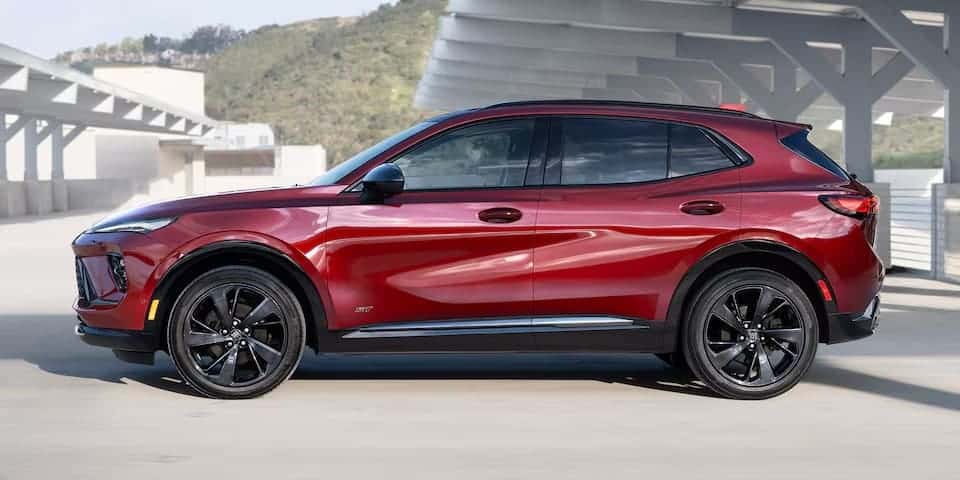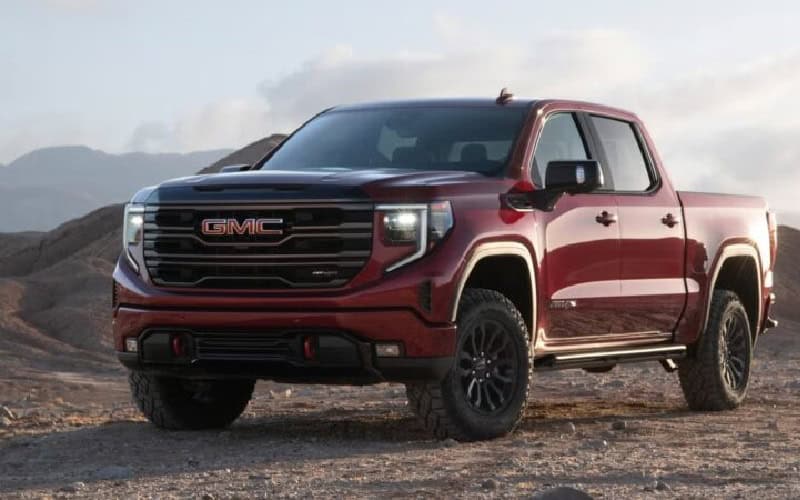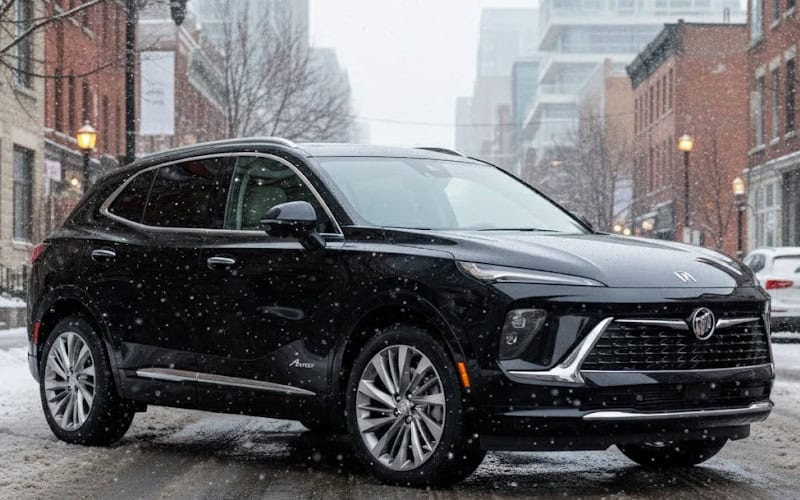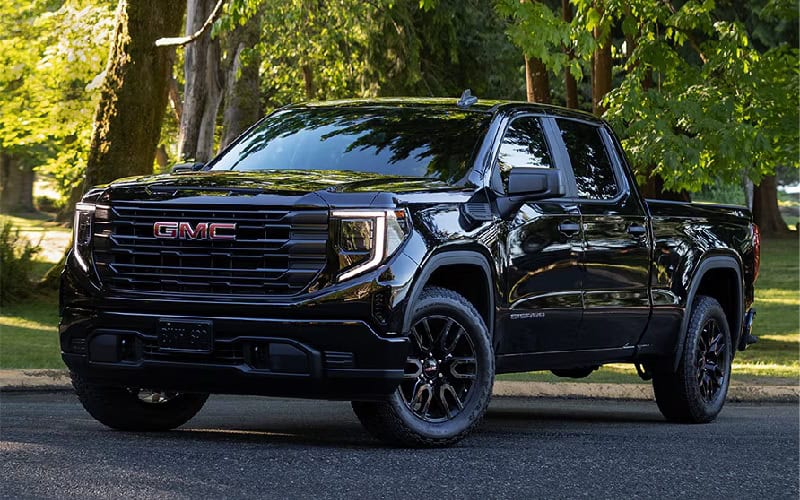My Buick Envision Windshield Washer Reservoir is Full
As a proud owner of a Buick Envision, I’ve come to appreciate the importance of every component in my vehicle, including the often-overlooked windshield washer system. Recently, I noticed that my windshield washer reservoir was full, which led me to dive deeper into understanding this crucial part of my car’s maintenance. In this article, I’ll […]
As a proud owner of a Buick Envision, I’ve come to appreciate the importance of every component in my vehicle, including the often-overlooked windshield washer system. Recently, I noticed that my windshield washer reservoir was full, which led me to dive deeper into understanding this crucial part of my car’s maintenance. In this article, I’ll share my insights on why the reservoir might be full, how to clean it, and what features different Envision trims offer regarding the windshield washer system.

Why Is My Windshield Washer Reservoir Full?
Finding a full windshield washer reservoir in my Buick Envision isn’t necessarily a cause for concern. It’s often a good sign that I’ve been diligent about maintaining this aspect of my vehicle. However, there are several reasons why the reservoir might be full:
- Recent Refill: The most obvious reason is that I or a service technician recently topped off the fluid. Forgetting this routine maintenance task is easy, especially if a technician handled it during a regular service appointment.
- Low Fluid Usage: If I haven’t been using the windshield washers frequently, perhaps due to dry weather conditions or minimal driving, the reservoir naturally remains full.
- Efficient Washer System: The Buick Envision is designed with an efficient washer system that uses fluid judiciously, which means the reservoir doesn’t deplete quickly.
- Larger Reservoir Capacity: Some newer Envision models might have a larger reservoir capacity compared to older versions or other vehicles I’ve owned, giving the impression that it’s always full.
- Blocked Nozzles: In some cases, blocked washer nozzles can prevent fluid from being dispensed, keeping the reservoir full. This is something I need to check and address if it’s the case.
Clean the Windshield Washer Reservoir
Even though my reservoir is full, it’s crucial to ensure it’s clean to maintain the system’s efficiency and prevent potential issues. Here’s how I clean my Buick Envision windshield washer reservoir:
- Safety First: I always start by ensuring the engine is cool and the car is parked on a level surface with the parking brake engaged.
- Locate the Reservoir: In my Envision, the washer fluid reservoir is typically located in the engine compartment. It’s usually a white or semi-transparent container with a windshield or water symbol on the cap.
- Drain the Existing Fluid: I carefully siphon out the existing fluid into a suitable container for proper disposal. It’s important not to let this fluid run onto the ground as it can be harmful to the environment.
- Prepare a Cleaning Solution: I mix a solution of warm water and a small amount of mild dish soap. Some auto parts stores also sell specialized washer system cleaners, which I sometimes use.
- Clean the Reservoir: Using a funnel, I pour the cleaning solution into the reservoir, filling it about halfway. Then, I replace the cap and gently shake the vehicle to agitate the solution.
- Flush the System: I run the windshield washers until the soapy water is expelled through the nozzles. This helps clean the entire system, including the lines and nozzles.
- Rinse: I repeat the process with clean water to rinse out any remaining soap.
- Refill with Fresh Fluid: Finally, I refill the reservoir with new, high-quality windshield washer fluid appropriate for my climate.
Windshield Washer Features Across Buick Envision Trims
The Buick Envision offers various trims, each with its own set of features related to the windshield washer system. While the basic functionality remains consistent across all trims, there are some notable differences:
Preferred Trim
In the base Preferred trim of my Envision, I find that the windshield washer system includes:
- Standard front and rear washer nozzles
- A manually operated rear window wiper and washer
- A decent-sized washer fluid reservoir (typically around 3.5 liters)
Sport Touring (ST) Trim
Stepping up to the Sport Touring trim, I noticed some enhancements:
- Heated washer fluid nozzles for improved performance in colder climates
- Rain-sensing wipers that automatically adjust wiper speed based on precipitation intensity
- A slightly larger reservoir capacity (approximately 4 liters)
Avenir Trim
The top-tier Avenir trim offers the most advanced features:
- High-pressure washer nozzles for more effective cleaning
- Adaptive spray patterns that adjust based on vehicle speed
- An advanced filtration system in the reservoir to keep contaminants out of the washer fluid
- The largest reservoir capacity in the Envision lineup (around 4.5 liters)
- Integration with the vehicle’s driver assistance systems, allowing for automatic washer activation when sensors detect significant debris on the windshield
Maintain the Windshield Washer System
Regardless of which Envision trim I’m driving, proper maintenance of the windshield washer system is crucial. You should always see a GM dealership for maintenance and service however, here are some tips I follow:
- Regular Checks: I make it a habit to check the fluid level at least once a month, more frequently during seasons when I use the washers more often.
- Quality Fluid: I use a high-quality washer fluid appropriate for my climate. I opt for a fluid with a lower freezing point in colder regions.
- Nozzle Maintenance: I periodically check and clean the washer nozzles to ensure they’re not clogged. A fine needle or pin can be used to clear any blockages gently.
- System Flush: I perform a complete system flush once a year as described in the cleaning process above.
- Winter Preparation: Before winter, I ensure the system is filled with winter-grade washer fluid to prevent freezing.
- Professional Inspection: During regular service appointments, I ask my Buick technician to inspect the entire washer system, including pumps and hoses.
Fix Common Issues
Even with proper maintenance, I’ve encountered a few issues with my Envision washer system:
- No Fluid Spray: If fluid doesn’t spray, I check for clogged nozzles or a faulty pump.
- Weak Spray: This could indicate partially clogged nozzles or low fluid pressure. I clean the nozzles and check the pump.
- Leaks: Any signs of leaks around the reservoir or under the vehicle warrant immediate attention. I check for loose connections or damaged hoses.
- Strange Noises: If I hear unusual noises when using the washers, it could indicate a problem with the pump or air in the system.
- Streaking: If the washers leave streaks on the windshield, it might be time to replace the wiper blades or use a better quality washer fluid.
Ensure a Clean Windshield on Your Buick Envision
Understanding and maintaining the windshield washer system in my Buick Envision has proven to be more interesting and important than I initially thought. From the basic setup in the Preferred trim to the advanced features in the Avenir, each aspect of this system contributes to my safety and driving comfort.
A full reservoir is generally a good sign, but it’s just the beginning of proper washer system care. Regular cleaning, maintenance, and awareness of the features specific to my Envision trim level all ensure clear visibility on the road. Remember to visit a GM dealership for quality service and maintenance.
As I continue to enjoy my Buick Envision, I’ve come to appreciate these seemingly small details that make a big difference in my driving experience. Whether I’m navigating through a spring shower or battling winter road grime, I can rest assured that my windshield washer system is ready to keep my view clear and my drive safe.
**Disclaimer:** This information is intended for general knowledge only. For accurate and safe modifications or maintenance, please consult professionals at a GM dealership. Attempting to perform these tasks without proper expertise is not recommended and may result in damage or void warranties.


